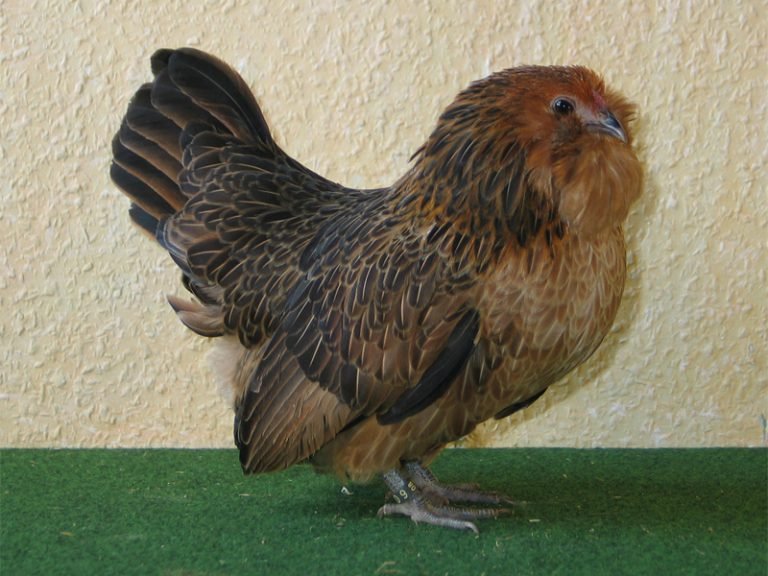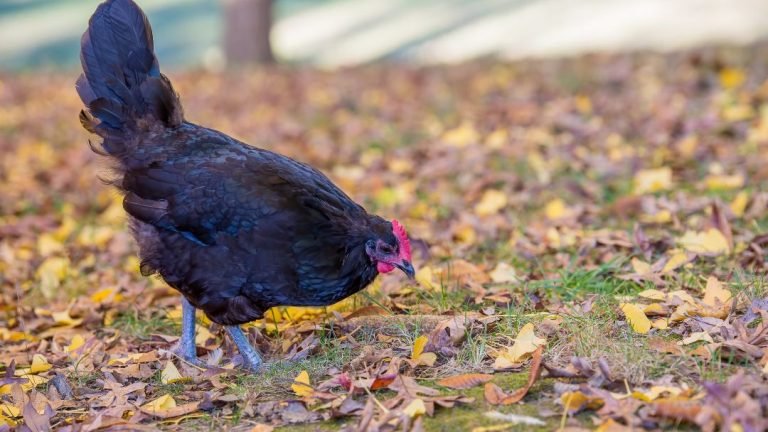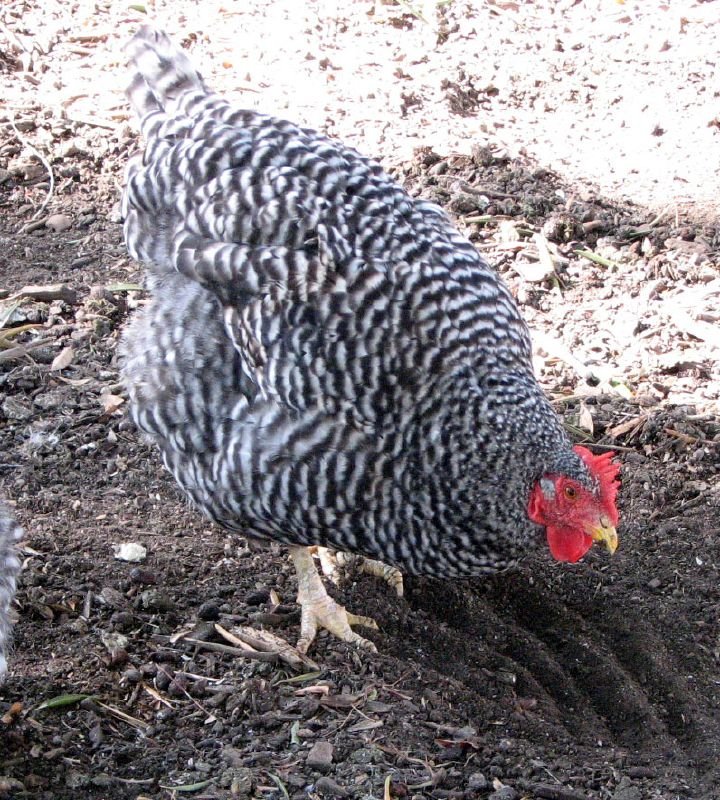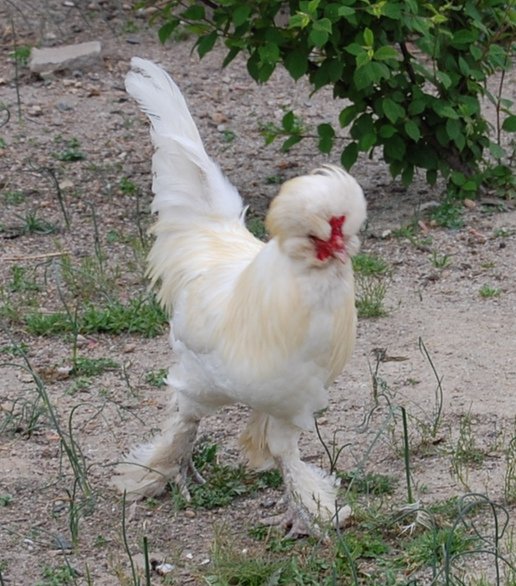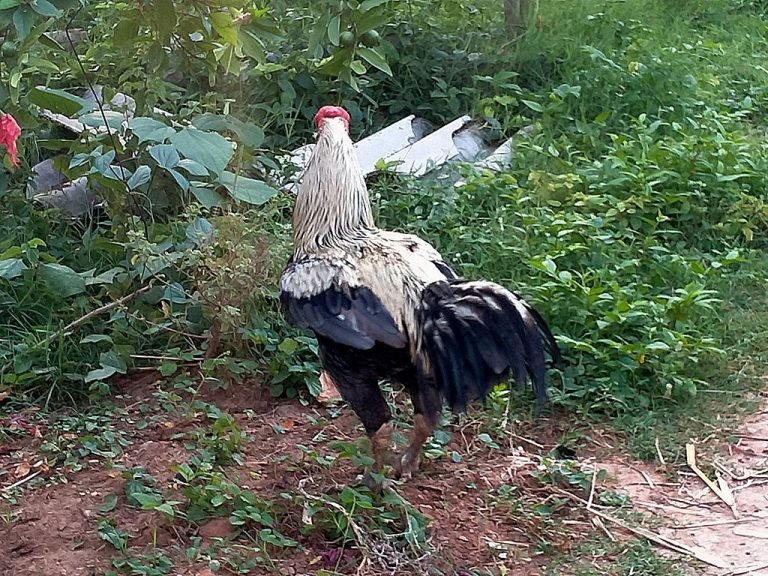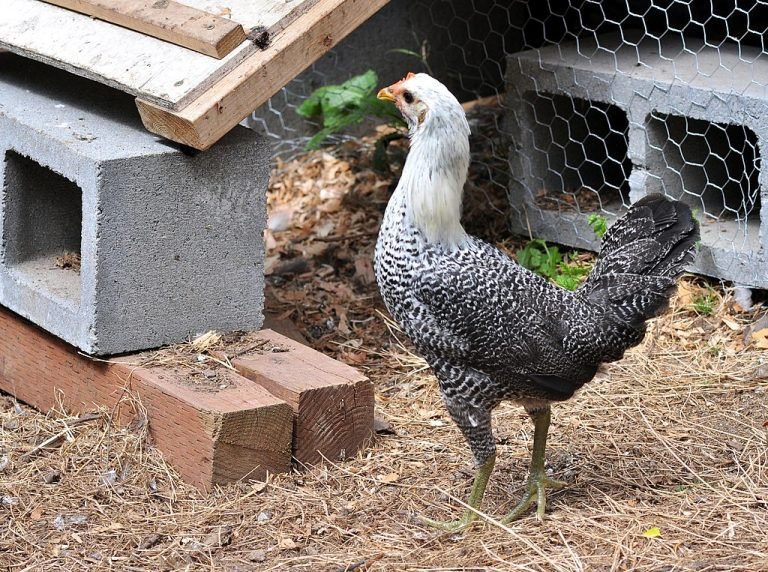The Buckeye chicken breed is a dual-purpose breed known for its hardiness and rich, flavorful meat. Originating in Ohio in the late 19th century, the Buckeye chicken breed was developed by Nettie Metcalf with an aim to create a practical and resilient bird that performs well in both meat and egg production.
With its vibrant mahogany plumage and confident disposition, the Buckeye has gained popularity among homesteaders and backyard chicken enthusiasts. This breed is known for its foraging abilities, adaptability to various climates, and good mothering instincts. Along with being an excellent meat provider, Buckeye chickens are also known to lay a respectable number of brown eggs per year.
We will dive deeper into the characteristics, care requirements, and benefits of raising Buckeye chickens.
History
The Buckeye chicken breed, known for its resilient nature and striking appearance, has a rich history rooted in American heritage. Developed in the late 19th century by Nettie Metcalf, the breed is named after the Buckeye State – Ohio, where it originated.
This breed was created by crossing the Barred Plymouth Rock, Buff Cochin, and Black-Breasted Red Game chickens. The main objective behind the breed’s creation was to establish a hardy dual-purpose chicken that thrived in the harsh Ohio climate while providing an abundant supply of eggs and meat.
Key points about the history of the Buckeye chicken breed include:
- Nettie Metcalf, a pioneer breeder, devoted her time and effort to developing a breed with unique qualities suited for Ohio’s rugged environment.
- The breed is recognized as the only chicken developed exclusively by a woman in the United States.
- It was named after the state tree of Ohio, the Buckeye, due to its deep mahogany red plumage resembling the buckeye seed.
- The Buckeye breed was admitted to the American Poultry Association (APA) Standard of Perfection in 1904.
- Initially, Buckeyes faced challenges due to the popularity of commercial poultry breeds, but dedicated enthusiasts have preserved and promoted the breed to the present day.
The Buckeye chicken breed’s history showcases the passion and dedication of Nettie Metcalf in creating a unique and resilient breed. The Buckeye breed continues to captivate chicken enthusiasts worldwide with its charming appearance and practical attributes.

General Characteristics
The Buckeye chicken breed captivates with its distinctive appearance, featuring rich mahogany feathers and a commanding stance. Known for its hardiness, this breed adapts well to various climates and is a great choice for backyard chicken enthusiasts.
The Buckeye chicken breed is known for its distinctive appearance, resilience, and gentle temperament. These chickens have a unique combination of traits that make them a popular choice among poultry enthusiasts. Here are the key general characteristics of the Buckeye chicken breed:
- Appearance: The Buckeye breed features magnificent plumage, with feathers ranging in shades of deep mahogany red. They have a compact body, and their upright stance gives them an alert and confident look.
- Size: Fully grown Buckeye chickens are considered a medium-sized breed. Roosters typically weigh around 7-9 pounds, while hens are slightly smaller, ranging between 5-7 pounds.
- Hardiness: Buckeyes are incredibly hardy birds, well-suited to a range of climates. They can tolerate cold temperatures remarkably well, making them a popular breed in regions with harsh winters.
- Egg Production: Buckeyes are moderately good layers, producing around 150-200 large brown eggs per year. Although they may not be the most prolific layers, the quality of their eggs is highly regarded.
- Foraging Abilities: These chickens are natural foragers, enjoying the opportunity to explore their surroundings for insects and other tasty treats. They are happiest when allowed to free-range and exhibit their scavenging abilities.
- Dual Purpose: The Buckeye breed is considered a dual-purpose chicken, which means it is bred for both meat and egg production. Their meat is known for its flavor and tenderness.
Overall, the Buckeye chicken breed is a fine example of a hardy, attractive, and versatile bird. With their gentle disposition and useful characteristics, they make an ideal choice for poultry enthusiasts looking to raise chickens that are both aesthetically pleasing and productive.
Temperament
The temperament of the Buckeye chicken breed is known for being calm and docile, making them a suitable choice for backyard flocks. These chickens are friendly and easy to handle, making them great for families and beginners. Their peaceful nature also makes them less likely to cause issues within the flock.
They are adaptable to different climates and are excellent foragers.
Buckeye chickens are known for their friendly and docile temperament. They have a calm and curious nature, making them great for backyard flocks and small farms. Here are some key characteristics of their temperament:
- Sociable: Buckeyes are known for being sociable birds that get along well with other chickens. They enjoy the company of both humans and other animals, making them a great choice for pet-friendly environments.
- Docile: These chickens have a gentle and easy-going nature. They are not aggressive or flighty, making them easy to handle and interact with. Buckeyes are known to be quite friendly towards their caretakers.
- Curious: Buckeyes are naturally curious birds that enjoy exploring their surroundings. They will often investigate new objects or areas in their environment, which can be entertaining to watch.
- Alert: Despite their friendly disposition, Buckeyes are also vigilant and alert. They have a good sense of awareness and will quickly respond to any potential threats or disturbances.
- Reliable: Buckeyes are known for being reliable egg layers. They consistently lay medium-sized brown eggs, making them a popular choice for small-scale egg production.
Overall, the temperament of Buckeye chickens makes them a great choice for both beginners and experienced chicken keepers. Their friendly and calm nature, combined with their reliable egg-laying abilities, makes them a delightful addition to any flock.
Comb Types
The Buckeye chicken breed features distinctive comb types that set it apart from other chicken breeds. Combs refer to the fleshy growths on the top of a chicken’s head, which serve various purposes such as regulating body temperature and attracting mates.
The Buckeye breed is known for its unique comb types, which contribute to its charm and individuality. Let’s explore the different comb types found in Buckeye chickens:
Single Comb
- The most common comb type among chickens, including the Buckeye breed
- A single, elongated comb with a center ridge and multiple smaller ridges on either side
- Provides excellent heat dissipation and cold tolerance
- Prone to frostbite in extremely cold weather, requiring proper care and protection
Pea Comb
- A distinctive trait of the Buckeye breed
- Smaller and compact compared to the single comb
- Rounded and shorter in length, resembling a pea pod
- Offers improved cold tolerance compared to the single comb
Rose Comb
- Another unique feature of the Buckeye chicken breed
- Broad and flattened appearance, resembling a rose petal
- Excellent heat tolerance and resistance to frostbite
- Ideal for hot climates where heat dissipation is critical
V-Shaped Comb (Or Strawberry Comb)
- A less common comb type found in some Buckeye chickens
- Resembles the letter ‘V’ or a strawberry in shape
- Provides moderate heat dissipation and cold tolerance
Buttercup Comb
- A rare and distinctive comb type among Buckeye chickens
- Resembles the shape of a buttercup flower
- Provides good heat dissipation and cold tolerance
- Requires proper care and protection to prevent frostbite
The Buckeye chicken breed boasts a variety of comb types, each with its own unique characteristics. Whether it’s the single comb, pea comb, rose comb, V-shaped comb, or buttercup comb, each comb type contributes to the functionality and beauty of the breed.
If you’re considering raising Buckeye chickens, understanding their comb types will help you provide the appropriate care and ensure their well-being in various climates.
Conclusion
The Buckeye chicken breed is a remarkable choice for backyard chicken enthusiasts. Their striking appearance, hardy nature, and exceptional egg-laying abilities make them a favorite among poultry enthusiasts. With their unique plumage and gentle disposition, Buckeyes make for a visually appealing addition to any flock while also providing a steady supply of delicious brown eggs.
Despite their larger size, these birds are known for their docile and friendly temperament, making them suitable for families with children. Furthermore, their adaptability to various climates and resistance to many common poultry diseases make them a low-maintenance breed that is ideal for both novice and experienced chicken keepers alike.
Whether you are looking to enhance your flock or start a new one, the Buckeye chicken breed will undoubtedly make a valued and valuable addition to your poultry collection. So why wait? Consider adding Buckeyes to your flock today and experience the joy and rewards they bring.


